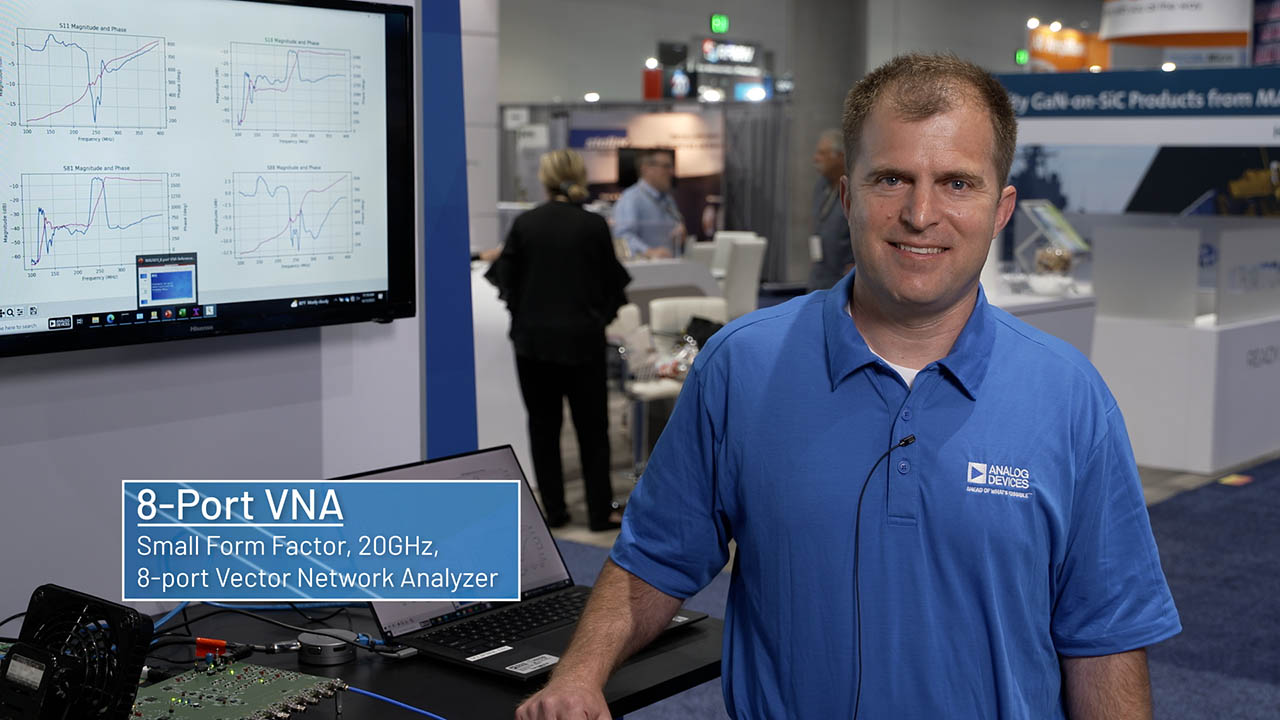The ADL5961 is a wideband, small form factor, vector network analyzer
(VNA) front end consisting of a resistive bidirectional bridge,
downconversion mixers, programmable IF amplifiers and filters, and
a highly flexible local oscillator (LO) interface. The bridge provides
>14 dB of directivity up to 17 GHz. The primary transmission line
from RFIN to RFOUT is wideband matched to 50 Ω with only 1.1 dB
loss at 9 kHz near DC, increasing to 1.8 dB loss at 26.5 GHz.
The ADL5961 supports several different LO interface configurations
that simplify the clocking design of a VNA solution as well as the
interfacing of the device to an analog-to-digital converter (ADC).
The frequency divider and multipliers in the LO interface enable
measurement sweeps beyond the operating frequency range of the
LO source, enabling operation over the full 26.5 GHz frequency
range of the ADL5961 using a 6 GHz synthesizer. The IF frequency
offset mixer, driven through the offset interface formed by the
OFP and OFM pins, enables further simplification by allowing the
swept RF and LO interfaces to share the same frequency source.
The frequency of the IF output signals is then determined by the
low-frequency source driving the OFP/OFM interface. When this
interface is driven at the ADC sample frequency with the divide by
4 enabled, it automatically centers the IF output signal in the first
Nyquist zone.
The IF filters with programmable bandwidth and IF amplifiers
with individually programmable gain enable simultaneous dynamic
range optimization of the IF output signals of the forward channel
(IFFP, IFFM) and reverse channel (IFRP, IFRM). The IF amplifiers
have an adjustable output common-mode level, sufficient drive
capability, and wide output voltage swing to enable direct interfacing
to a wide range of ADCs.
All configurations and functions in the ADL5961 are fully programmable
through a 3-wire serial peripheral interface (SPI). The
ADL5961 is offered in a 3 mm × 4 mm, 26-lead land grid array
(LGA) package.
APPLICATIONS
- Broadband, multiport vector network analyzers
- S-parameter magnitude and phase measurement
- Inline RF power measurement
- Automated test equipment
- Reflectometers
- Materials analysis





